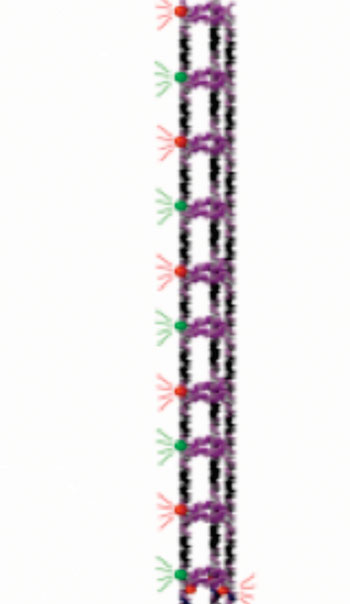New Study Details the Block by Block Assembly of DNA Nanotubes
By LabMedica International staff writers
Posted on 11 Mar 2015
A team of biomolecular engineers has developed a method for the block by block assembly of DNA nanotubes that controls the positioning of rungs along the backbone of the nanotubes, minimizes the polydispersity in their manufacture, and reduces the building costs.Posted on 11 Mar 2015
Previously, researchers had prepared nanotubes using a method that relied on spontaneous assembly of DNA in solution. This method frequently introduced structural flaws and did not allow fine control of tube size.

Image: In the new method for building nanotubes, blocks tagged with a fluorescent dye are incorporated step by step, enabling researchers to monitor formation of the structures as they are constructed (Photo courtesy of Dr. Graham D. Hamblin, McGill University).
Utilizing advances in single-molecule fluorescence microscopy, investigators at McGill University (Montreal, Canada) developed a new, low-cost method to build DNA nanotubes block by block. Nanotubes prepared in this fashion could be custom designed to a specific length and nucleotide sequence and were better suited for use in applications such as optical and electronic devices or smart drug-delivery systems.
The investigators reported in the February 23, 2015, online edition of the journal Nature Chemistry that they had constructed prototype structures of about 450 nm in contour length consisting of up to 20 repeat units. These were built using a cyclic scheme starting from a "foundation rung" specifically bound to a surface. Distinct rungs were then incorporated in a predetermined manner. Using fluorescently tagged rungs, single-molecule fluorescence studies demonstrated the robustness and structural fidelity of the constructs and confirmed the incorporation of the rungs in quantitative yield (greater than 95%) at each step of the cycle.
“Just like a Tetris game, where we manipulate the game pieces with the aim of creating a horizontal line of several blocks, we can now build long nanotubes block by block,” said first author Amani Hariri, a doctoral student in chemistry at McGill University. “By using a fluorescence microscope we can further visualize the formation of the tubes at each stage of assembly, as each block is tagged with a fluorescent compound that serves as a beacon. We can then count the number of blocks incorporated in each tube as it is constructed.”
Related Links:
McGill University














